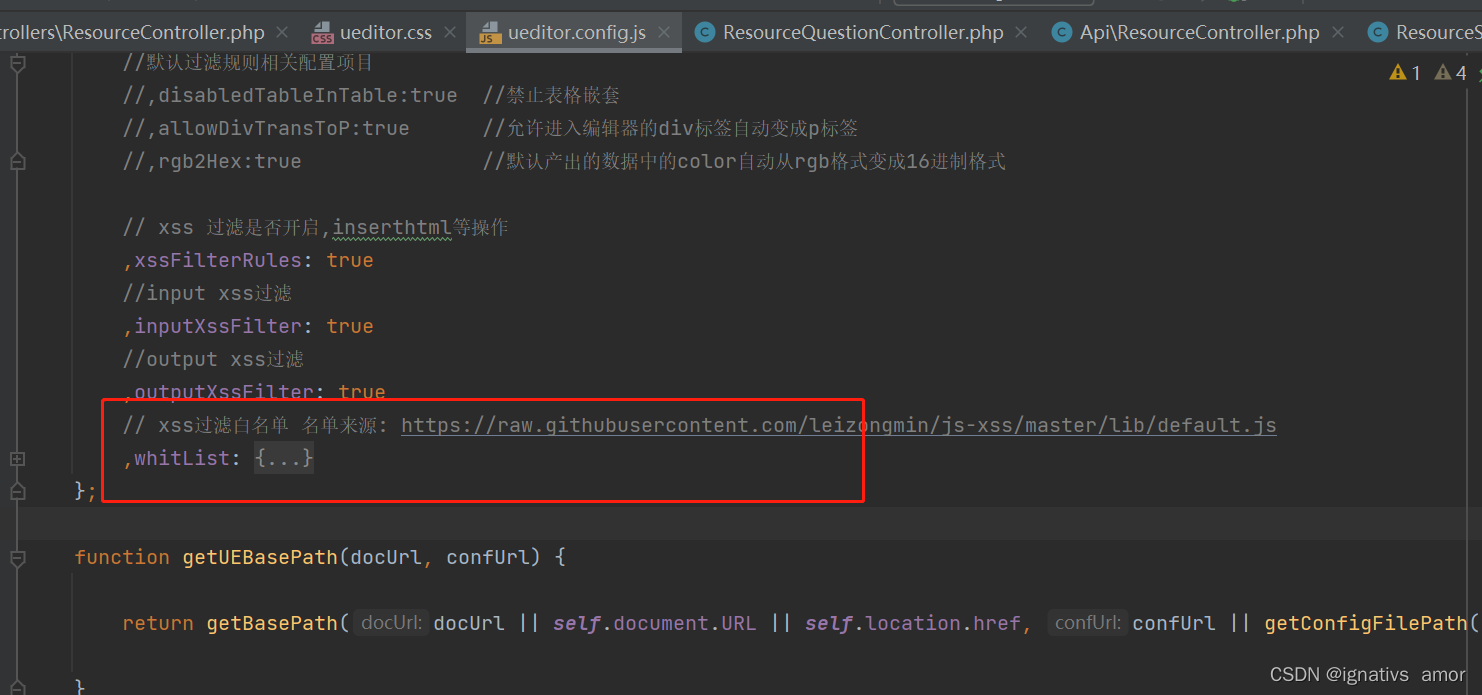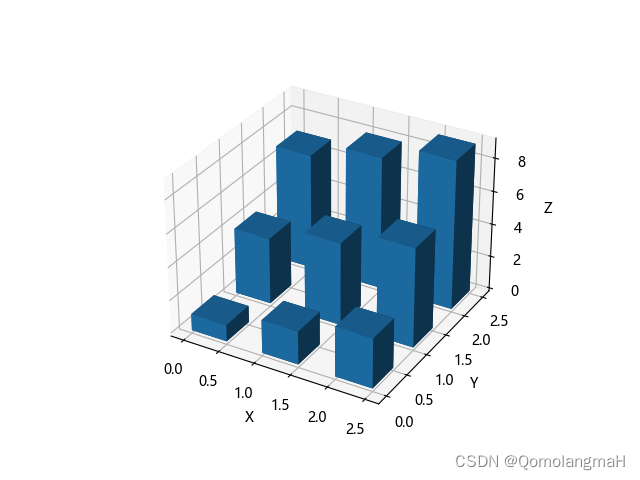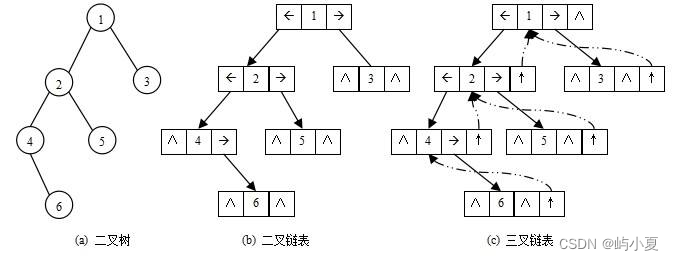文章目录
- 前言
- 原理
- 思路分析
- 实现Observer
- 实现Watcher
- 实现Compile
前言
Vue.js的双向绑定原理是其最重要的特性之一,它使得数据模型和DOM之间的同步变得非常简单和高效。
先上个成果图来吸引各位:

new SimpleVue({el: '#app',data: {title: 'SimpleVue',name: 'initial input value'},methods: {clickMe: function () {this.title = 'click event change title';}},mounted: function () {window.setTimeout(() => {this.title = 'title changed 2 second later';}, 2000);}
});
接下来就来从原理到实现,从简到难一步一步来实现这个SimpleVue。
本文主要介绍两大内容:
-
vue数据双向绑定的原理。
-
实现简易版vue的过程,主要实现{{}}、v-model和事件指令的功能。
原理
vue数据双向绑定是通过数据劫持结合发布者-订阅者模式的方式来实现的。
我们可以先来看一下通过控制台输出一个定义在vue初始化数据上的对象是个什么东西。
代码:
const vm = new Vue({data: {obj: {a: 1}},created: function () {console.log(this.obj);}
});
结果:

我们可以看到属性a有两个相对应的get和set方法,为什么会多出这两个方法呢?
因为vue是通过Object.defineProperty()来实现数据劫持的。
Object.defineProperty()是用来做什么的?
它可以来控制一个对象属性的一些特有操作,比如读写权、是否可以枚举,这里我们主要先来研究下它对应的两个描述属性get和set,如果还不熟悉其用法,请点击这里用法。
在平常,我们很容易就可以打印出一个对象的属性数据:
const personInfo = {name: '好男人'
};
console.log(personInfo.name); // 好男人
如果想要在执行console.log(personInfo.name)的同时,直接给name加个感叹号,那要怎么处理呢?或者说要通过什么监听对象 personInfo 的属性值。这时候Object.defineProperty()就派上用场了,代码如下:
const personInfo = {name: ''
}
Object.defineProperty(personInfo, 'name', {set: function (value) {name = value;console.log('重新设置的名称叫做' + value);},get: function () {return name + '!!!'}
})personInfo.name = '好男人'; // 重新设置的名称叫做好男人
console.log(personInfo.name); // 好男人!!!
我们通过Object.defineProperty()设置了对象personInfo的name属性,对其get和set进行重写操作。
顾名思义,get就是在读取name属性这个值触发的函数,set就是在设置name属性这个值触发的函数。
所以当执行 personInfo.name = ‘好男人’ 这个语句时,控制台会打印出 “重新设置的名称叫做好男人”,紧接着,当读取这个属性时,就会输出 " 好男人!!! ",因为我们在get函数里面对该值做了加工了。如果这个时候我们执行下下面的语句,控制台会输出什么?
console.log(personInfo);
结果:

乍一看,是不是跟我们在上面打印vue数据长得有点类似,说明vue确实是通过这种方法来进行数据劫持的。接下来我们通过其原理来实现一个简单版的mvvm双向绑定代码。
思路分析
实现mvvm主要包含两个方面,数据变化更新视图,视图变化更新数据:

关键点在于data如何更新view,因为view更新data其实可以通过事件监听即可,比如input标签监听 ‘input’ 事件就可以实现了。所以我们着重来分析下,当数据改变,如何更新视图的。
数据更新视图的重点是如何知道数据变了,只要知道数据变了,那么接下去的事都好处理。如何知道数据变了,其实上文我们已经给出答案了,就是通过Object.defineProperty()对属性设置一个set函数,当数据改变了就会来触发这个函数,所以我们只要将一些需要更新的方法放在这里面就可以实现data更新view了。

思路有了,接下去就是实现过程了。因此接下去我们执行以下3个步骤,实现数据的双向绑定:
- 我们已经知道实现数据的双向绑定,首先要对数据进行劫持监听,所以我们需要实现一个监听器Observer,用来劫持并监听所有属性,如果有变动的,就通知订阅者。
- 实现一个订阅者Watcher,可以收到属性的变化通知并执行相应的函数,从而更新视图。同时需要实现一个消息订阅器Dep来专门收集这些订阅者,并在监听器Observer和订阅者Watcher之间进行统一管理的。
- 接着,我们还需要实现指令解析器Compile,对每个节点元素进行扫描和解析,将相关指令初始化为对应的订阅者Watcher,并替换模板数据或者绑定相应的函数,此时当订阅者Watcher接收到相应属性的变化,就会执行对应的更新函数,从而更新视图。
流程图如下:

实现Observer
Observer是一个数据监听器,其实现核心方法就是前文所说的Object.defineProperty()。如果要对所有属性都进行监听的话,那么可以通过递归方法遍历所有属性值,并对其进行Object.defineProperty()处理。如下代码,实现了一个Observer。
function defineReactive(data, key, val) {observe(val); // 递归遍历所有子属性Object.defineProperty(data, key, {enumerable: true,configurable: true,get: function() {return val;},set: function(newVal) {val = newVal;console.log('属性' + key + '已经被监听了,现在值为:“' + newVal.toString() + '”');}});
}function observe(data) {if (!data || typeof data !=== 'object') {return;}Object.keys(data).forEach(function(key) {defineReactive(data, key, data[key]);});
};const library = {personInfo1: {name: ''},personInfo2: ''
};
observe(library);
library.personInfo1.name = '好男人'; // 属性name已经被监听了,现在值为:“好男人”
library.personInfo2 = '哪有如此好男人?'; // 属性personInfo2已经被监听了,现在值为:“哪有如此好男人?”
思路分析中,需要创建一个可以容纳订阅者的消息订阅器Dep,订阅器Dep主要负责收集订阅者,然后在属性变化的时候执行对应订阅者的更新函数。所以显然订阅器需要有一个容器,这个容器就是list,将上面的Observer稍微改造下,植入消息订阅器:
function defineReactive(data, key, val) {observe(val); // 递归遍历所有子属性const dep = new Dep(); Object.defineProperty(data, key, {enumerable: true,configurable: true,get: function() {if (是否需要添加订阅者) {dep.addSub(watcher); // 在这里添加一个订阅者}return val;},set: function(newVal) {if (val === newVal) {return;}val = newVal;console.log('属性' + key + '已经被监听了,现在值为:“' + newVal.toString() + '”');dep.notify(); // 如果数据变化,通知所有订阅者}});
}function Dep () {this.subs = [];
}
Dep.prototype = {addSub: function(sub) {this.subs.push(sub);},notify: function() {this.subs.forEach(function(sub) {sub.update();});}
};
从代码上看,我们将订阅器Dep添加一个订阅者设计在getter里面,这是为了让Watcher初始化进行触发,因此需要判断是否要添加订阅者,至于具体设计方案,下文会详细说明的。
在setter函数里面,如果数据变化,就会去通知所有订阅者,订阅者们就会去执行对应的更新的函数。到此为止,一个比较完整Observer已经实现了,接下来我们开始设计Watcher。
实现Watcher
订阅者Watcher在初始化的时候需要将自己添加进订阅器Dep中,那该如何添加呢?
我们已经知道监听器Observer是在get函数执行了添加订阅者Watcher的操作的,所以我们只要在订阅者Watcher初始化的时候触发对应的get函数去执行添加订阅者操作即可,那要如何触发get的函数,再简单不过了,只要获取对应的属性值就可以触发了,核心原因就是因为我们使用了Object.defineProperty()进行数据监听。
这里还有一个细节点需要处理,我们只需要在订阅者Watcher初始化的时候才添加订阅者,所以需要做一个判断操作,因此可以在订阅器上做一下手脚:在Dep.target上缓存下订阅者,添加成功后再将其去掉就可以了。
订阅者Watcher的实现如下:
function Watcher(vm, exp, cb) {this.vm = vm;this.exp = exp;this.cb = cb;this.value = this.get(); // 将自己添加到订阅器的操作
}Watcher.prototype = {update: function() {this.run();},run: function() {const value = this.vm.data[this.exp];const oldVal = this.value;if (value !=== oldVal) {this.value = value;this.cb.call(this.vm, value, oldVal);}},get: function() {Dep.target = this; // 缓存自己const value = this.vm.data[this.exp] // 强制执行监听器里的get函数Dep.target = null; // 释放自己return value;}
};
这时候,我们需要对监听器Observer也做个稍微调整,主要是对应Watcher类原型上的get函数。需要调整地方在于defineReactive函数:
function defineReactive(data, key, val) {observe(val); // 递归遍历所有子属性const dep = new Dep(); Object.defineProperty(data, key, {enumerable: true,configurable: true,get: function() {if (Dep.target) { // 判断是否需要添加订阅者dep.addSub(Dep.target); // 在这里添加一个订阅者}return val;},set: function(newVal) {if (val === newVal) {return;}val = newVal;console.log('属性' + key + '已经被监听了,现在值为:“' + newVal.toString() + '”');dep.notify(); // 如果数据变化,通知所有订阅者}});
}
Dep.target = null;
到此为止,简单版的Watcher设计完毕,这时候我们只要将Observer和Watcher关联起来,就可以实现一个简单的双向绑定数据了。因为这里还没有设计解析器Compile,所以对于模板数据我们都进行写死处理,假设模板上有一个节点,且id号为’name’,并且双向绑定的绑定的变量也为’name’,且是通过两个大双括号包起来(这里只是为了演示,暂时没什么用处),模板如下:
<body><h1 id="name">{{name}}</h1>
</body>
这时候我们需要将Observer和Watcher关联起来:
function SimpleVue (data, el, exp) {this.data = data;observe(data);el.innerHTML = this.data[exp]; // 初始化模板数据的值new Watcher(this, exp, function (value) {el.innerHTML = value;});return this;
}
然后在页面上new以下SimpleVue类,就可以实现数据的双向绑定了:
<body><h1 id="name">{{name}}</h1>
</body>
<script src="js/observer.js"></script>
<script src="js/watcher.js"></script>
<script src="js/index.js"></script>
<script type="text/javascript">const ele = document.querySelector('#name');const SimpleVue = new SimpleVue({name: 'hello world'}, ele, 'name');window.setTimeout(function () {console.log('name值改变了');SimpleVue.data.name = 'name changed';}, 2000);</script>
这时候打开页面,可以看到页面刚开始显示了是’hello world’,过了2s后就变成’name changed’了。
到这里,总算大功告成一半了,但是还有一个细节问题,我们在赋值的时候是这样的形式 SimpleVue.data.name = 'name changed’而我们理想的形式是SimpleVue.name = ‘name changed’。
为了实现这样的形式,我们需要在new SimpleVue的时候做一个代理处理,让访问SimpleVue的属性代理为访问SimpleVue.data的属性,实现原理还是使用Object.defineProperty()对属性值再包一层:
function SimpleVue (data, el, exp) {const self = this;this.data = data;Object.keys(data).forEach(function(key) {self.proxyKeys(key); // 绑定代理属性});observe(data);el.innerHTML = this.data[exp]; // 初始化模板数据的值new Watcher(this, exp, function (value) {el.innerHTML = value;});return this;
}SimpleVue.prototype = {proxyKeys: function (key) {const self = this;Object.defineProperty(this, key, {enumerable: false,configurable: true,get: function proxyGetter() {return self.data[key];},set: function proxySetter(newVal) {self.data[key] = newVal;}});}
}
这下我们就可以直接通过 SimpleVue.name = ‘name changed’ 的形式来进行改变模板数据了。完整代码如下:
<!DOCTYPE html>
<html lang="en">
<head><meta charset="UTF-8"><title>self-vue</title>
</head>
<style>#name {text-align: center;}
</style>
<body><h1 id="name">{{name}}</h1>
</body>
<script src="js/observer.js"></script>
<script src="js/watcher.js"></script>
<script src="js/index.js"></script>
<script type="text/javascript">const ele = document.querySelector('#name');const SimpleVue = new SimpleVue({name: 'hello world'}, ele, 'name');window.setTimeout(function () {console.log('name值改变了');SimpleVue.name = 'name changed';}, 2000);</script>
</html>
js目录下有三个文件,如下
js/observer.js文件
function Observer(data) {this.data = data;this.walk(data);
}
Observer.prototype = {walk: function(data) {const self = this;Object.keys(data).forEach(function(key) {self.defineReactive(data, key, data[key]);});},defineReactive: function(data, key, val) {observe(val);const dep = new Dep();Object.defineProperty(data, key, {enumerable: true,configurable: true,get: function() {if (Dep.target) {dep.addSub(Dep.target);}return val;},set: function(newVal) {if (newVal === val) {return;}val = newVal;dep.notify();}});}
};function observe(value, vm) {if (!value || typeof value !=== 'object') {return;}return new Observer(value);
};function Dep () {this.subs = [];
}
Dep.prototype = {addSub: function(sub) {this.subs.push(sub);},notify: function() {this.subs.forEach(function(sub) {sub.update();});}
};
Dep.target = null;
js/watcher.js文件
function Watcher(vm, exp, cb) {this.vm = vm;this.exp = exp;this.cb = cb;this.value = this.get(); // 将自己添加到订阅器的操作
}Watcher.prototype = {update: function() {this.run();},run: function() {const value = this.vm.data[this.exp];const oldVal = this.value;if (value !=== oldVal) {this.value = value;this.cb.call(this.vm, value, oldVal);}},get: function() {Dep.target = this; // 缓存自己const value = this.vm.data[this.exp] // 强制执行监听器里的get函数Dep.target = null; // 释放自己return value;}
};
js/index.js文件
function SimpleVue (data, el, exp) {const self = this;this.data = data;Object.keys(data).forEach(function(key) {self.proxyKeys(key);});observe(data);el.innerHTML = this.data[exp]; // 初始化模板数据的值new Watcher(this, exp, function (value) {el.innerHTML = value;});return this;
}SimpleVue.prototype = {proxyKeys: function (key) {const self = this;Object.defineProperty(this, key, {enumerable: false,configurable: true,get: function proxyGetter() {return self.data[key];},set: function proxySetter(newVal) {self.data[key] = newVal;}});}
}
实现Compile
虽然上面已经实现了一个双向数据绑定的例子,但是整个过程都没有去解析dom节点,而是直接固定某个节点进行替换数据的,所以接下来需要实现一个解析器Compile来做解析和绑定工作。
解析器Compile实现步骤:
-
解析模板指令,并替换模板数据,初始化视图
-
将模板指令对应的节点绑定对应的更新函数,初始化相应的订阅器
为了解析模板,首先需要获取dom元素,然后对dom元素上含有指令的节点进行处理,因此这个环节需要对dom操作比较频繁,所以可以先建一个fragment片段,将需要解析的dom节点存入fragment片段里再进行处理:
function nodeToFragment (el) {const fragment = document.createDocumentFragment();let child = el.firstChild;while (child) {// 将Dom元素移入fragment中fragment.appendChild(child);child = el.firstChild}return fragment;
}
接下来需要遍历各个节点,对含有相关指定的节点进行特殊处理,这里咱们先处理最简单的情况,只对带有 ‘{{ 变量 }}’ 这种形式的指令进行处理,先易后难嘛,后面再考虑更多指令情况。
function compileElement (el) {const childNodes = el.childNodes;const self = this;[].slice.call(childNodes).forEach(function(node) {const reg = /\{\{\s*(.*?)\s*\}\}/;const text = node.textContent;if (self.isTextNode(node) && reg.test(text)) { // 判断是否是符合这种形式{{}}的指令self.compileText(node, reg.exec(text)[1]);}if (node.childNodes?.length) {self.compileElement(node); // 继续递归遍历子节点}});
},
function compileText (node, exp) {const self = this;const initText = this.vm[exp];updateText(node, initText); // 将初始化的数据初始化到视图中new Watcher(this.vm, exp, function (value) { // 生成订阅器并绑定更新函数self.updateText(node, value);});
},
function updateText (node, value) {node.textContent = typeof value === 'undefined' ? '' : value;
}
获取到最外层节点后,调用compileElement函数,对所有子节点进行判断,如果节点是文本节点且匹配{{}}这种形式指令的节点就开始进行编译处理,编译处理首先需要初始化视图数据,对应上面所说的步骤1,接下去需要生成一个并绑定更新函数的订阅器,对应上面所说的步骤2。这样一个解析器Compile也就可以正常的工作了。
为了将解析器Compile与监听器Observer和订阅者Watcher关联起来,我们需要再修改一下类SimpleVue函数:
function SimpleVue (options) {const self = this;this.vm = this;this.data = options;Object.keys(this.data).forEach(function(key) {self.proxyKeys(key);});observe(this.data);new Compile(options, this.vm);return this;
}
更改后,我们就不要像之前通过传入固定的元素值进行双向绑定了,可以随便命名各种变量进行双向绑定了:
到这里,一个数据双向绑定功能已经基本完成了。完整代码如下:
<!DOCTYPE html>
<html lang="en">
<head><meta charset="UTF-8"><title>self-vue</title>
</head>
<style>#app {text-align: center;}
</style>
<body><div id="app"><h2>{{ title }}</h2><h1>{{ name }}</h1></div>
</body>
<script src="js/observer.js"></script>
<script src="js/watcher.js"></script>
<script src="js/compile.js"></script>
<script src="js/index.js"></script><script type="text/javascript">const SimpleVue = new SimpleVue({el: '#app',data: {title: 'hello world',name: ''}});window.setTimeout(function () {SimpleVue.title = '你好';}, 2000);window.setTimeout(function () {SimpleVue.name = 'name changed';}, 2500);</script>
</html>
如上代码,在页面上可观察到,刚开始titile和name分别被初始化为 ‘hello world’ 和空,2s后title被替换成 ‘你好’ 2.5s后name被替换成 ‘name changed’ 了。
js目录下有四个文件,如下
js/observer.js文件内容无变化,此处不再赘述
js/watcher.js文件内容无变化,此处不再赘述
js/compile.js
function Compile(el, vm) {this.vm = vm;this.el = document.querySelector(el);this.fragment = null;this.init();
}Compile.prototype = {init: function () {if (this.el) {this.fragment = this.nodeToFragment(this.el);this.compileElement(this.fragment);this.el.appendChild(this.fragment);} else {console.log('Dom元素不存在');}},nodeToFragment: function (el) {const fragment = document.createDocumentFragment();let child = el.firstChild;while (child) {// 将Dom元素移入fragment中fragment.appendChild(child);child = el.firstChild}return fragment;},compileElement: function (el) {const childNodes = el.childNodes;const self = this;[].slice.call(childNodes).forEach(function(node) {const reg = /\{\{\s*(.*?)\s*\}\}/;const text = node.textContent;if (self.isTextNode(node) && reg.test(text)) { // 判断是否是符合这种形式{{}}的指令self.compileText(node, reg.exec(text)[1]);}if (node.childNodes?.length) {self.compileElement(node); // 继续递归遍历子节点}});},compileText: function(node, exp) {const self = this;const initText = this.vm[exp];this.updateText(node, initText); // 将初始化的数据初始化到视图中new Watcher(this.vm, exp, function (value) { // 生成订阅器并绑定更新函数self.updateText(node, value);});},updateText: function (node, value) {node.textContent = typeof value === 'undefined' ? '' : value;},isTextNode: function(node) {return node.nodeType === 3;}
}
js/index.js文件
function SimpleVue (options) {const self = this;this.vm = this;this.data = options.data;Object.keys(this.data).forEach(function(key) {self.proxyKeys(key);});observe(this.data);new Compile(options.el, this.vm);return this;
}SimpleVue.prototype = {proxyKeys: function (key) {const self = this;Object.defineProperty(this, key, {enumerable: false,configurable: true,get: function proxyGetter() {return self.data[key];},set: function proxySetter(newVal) {self.data[key] = newVal;}});}
}
接下去就是需要完善更多指令的解析编译,在哪里进行更多指令的处理呢?
答案很明显,只要在上文说的compileElement函数加上对其他指令节点进行判断,然后遍历其所有属性,看是否有匹配的指令的属性,如果有的话,就对其进行解析编译。
这里我们再添加一个v-model指令和事件指令的解析编译,对于这些节点我们使用函数compile进行解析处理:
function compile (node) {const nodeAttrs = node.attributes;const self = this;Array.prototype.forEach.call(nodeAttrs, function(attr) {const attrName = attr.name;if (self.isDirective(attrName)) {const exp = attr.value;const dir = attrName.substring(2);if (self.isEventDirective(dir)) { // 事件指令self.compileEvent(node, self.vm, exp, dir);} else { // v-model 指令self.compileModel(node, self.vm, exp, dir);}node.removeAttribute(attrName);}});
}
上面的compile函数是挂载Compile原型上的,它首先遍历所有节点属性,然后再判断属性是否是指令属性,如果是的话再区分是哪种指令,再进行相应的处理。
最后我们在稍微改造下类SimpleVue,使它更像vue的用法:
function SimpleVue (options) {const self = this;this.data = options.data;this.methods = options.methods;Object.keys(this.data).forEach(function(key) {self.proxyKeys(key);});observe(this.data);new Compile(options.el, this);options.mounted.call(this); // 所有事情处理好后执行mounted函数
}
这时候我们可以来真正测试了,完整代码如下:
<!DOCTYPE html>
<html lang="en">
<head><meta charset="UTF-8"><title>self-vue</title>
</head>
<style>#app {text-align: center;}
</style>
<body><div id="app"><h2>{{title}}</h2><input v-model="name" /><h1>{{name}}</h1><button v-on:click="clickMe">click me!</button></div>
</body>
<script src="js/observer.js"></script>
<script src="js/watcher.js"></script>
<script src="js/compile.js"></script>
<script src="js/index.js"></script>
<script type="text/javascript">new SimpleVue({el: '#app',data: {title: 'SimpleVue',name: 'initial input value'},methods: {clickMe: function () {this.title = 'click event change title';}},mounted: function () {window.setTimeout(() => {this.title = 'title changed 2 second later';}, 2000);}});</script>
</html>
js目录下有四个文件,如下
js/observer.js文件内容无变化,此处不再赘述
js/watcher.js文件内容无变化,此处不再赘述
js/compile.js
function Compile(el, vm) {this.vm = vm;this.el = document.querySelector(el);this.fragment = null;this.init();
}Compile.prototype = {init: function () {if (this.el) {this.fragment = this.nodeToFragment(this.el);this.compileElement(this.fragment);this.el.appendChild(this.fragment);} else {console.log('Dom元素不存在');}},nodeToFragment: function (el) {const fragment = document.createDocumentFragment();let child = el.firstChild;while (child) {// 将Dom元素移入fragment中fragment.appendChild(child);child = el.firstChild}return fragment;},compileElement: function (el) {const childNodes = el.childNodes;const self = this;[].slice.call(childNodes).forEach(function(node) {const reg = /\{\{(.*?)\}\}/;const text = node.textContent;if (self.isElementNode(node)) { self.compile(node);} else if (self.isTextNode(node) && reg.test(text)) {self.compileText(node, reg.exec(text)[1]);}if (node.childNodes?.length) {self.compileElement(node);}});},compile: function(node) {const nodeAttrs = node.attributes;const self = this;Array.prototype.forEach.call(nodeAttrs, function(attr) {const attrName = attr.name;if (self.isDirective(attrName)) {const exp = attr.value;const dir = attrName.substring(2);if (self.isEventDirective(dir)) { // 事件指令self.compileEvent(node, self.vm, exp, dir);} else { // v-model 指令self.compileModel(node, self.vm, exp, dir);}node.removeAttribute(attrName);}});},compileText: function(node, exp) {const self = this;const initText = this.vm[exp];this.updateText(node, initText);new Watcher(this.vm, exp, function (value) {self.updateText(node, value);});},compileEvent: function (node, vm, exp, dir) {const eventType = dir.split(':')[1];const cb = vm.methods?.[exp];if (eventType && cb) {node.addEventListener(eventType, cb.bind(vm), false);}},compileModel: function (node, vm, exp, dir) {const self = this;const val = this.vm[exp];this.modelUpdater(node, val);new Watcher(this.vm, exp, function (value) {self.modelUpdater(node, value);});node.addEventListener('input', function(e) {const newValue = e.target.value;if (val === newValue) {return;}self.vm[exp] = newValue;val = newValue;});},updateText: function (node, value) {node.textContent = typeof value === 'undefined' ? '' : value;},modelUpdater: function(node, value, oldValue) {node.value = typeof value === 'undefined' ? '' : value;},isDirective: function(attr) {return attr.indexOf('v-') === 0;},isEventDirective: function(dir) {return dir.indexOf('on:') === 0;},isElementNode: function (node) {return node.nodeType === 1;},isTextNode: function(node) {return node.nodeType === 3;}
}
js/index.js文件
function SimpleVue (options) {const self = this;this.data = options.data;this.methods = options.methods;Object.keys(this.data).forEach(function(key) {self.proxyKeys(key);});observe(this.data);new Compile(options.el, this);options.mounted.call(this); // 所有事情处理好后执行mounted函数
}SimpleVue.prototype = {proxyKeys: function (key) {const self = this;Object.defineProperty(this, key, {enumerable: false,configurable: true,get: function getter () {return self.data[key];},set: function setter (newVal) {self.data[key] = newVal;}});}
}











